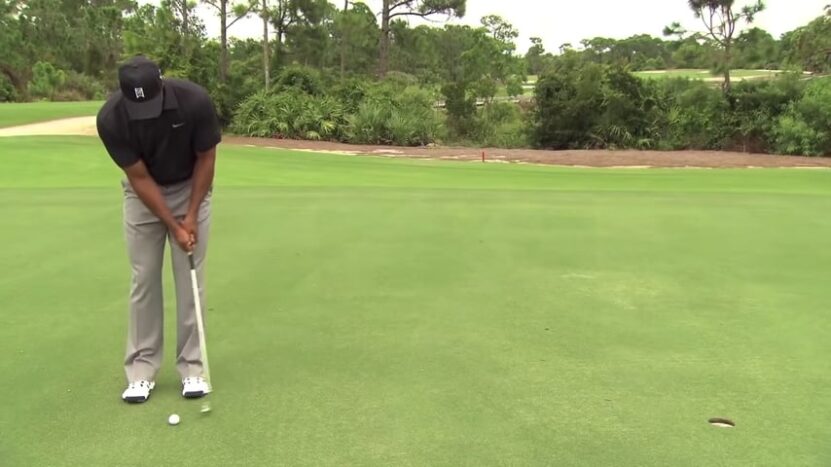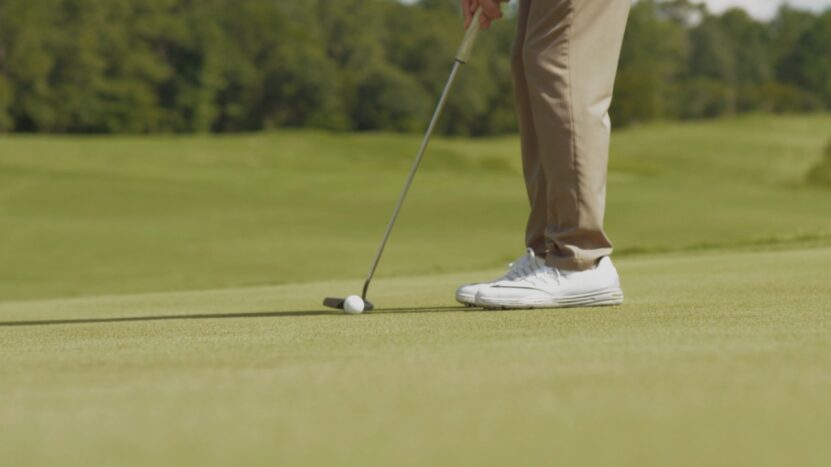When it comes to golf, few names are as synonymous with the sport as Tiger Woods. With his incredible work ethic, talent, and dedication to the game, Woods has become one of the most successful and iconic golfers in history. One of the keys to his success is his unparalleled putting ability. In this blog post, we will delve into the intricacies of Tiger Woods’ putting grip and provide valuable insights into how adopting his techniques can help improve your game.
A Gripping Tale: The Evolution of Tiger Woods’ Putting Grip
To truly appreciate the genius behind Tiger Woods’ putting grip, it’s important to understand its evolution over time. Throughout his career, Woods has made several adjustments to his grip, reflecting both his growth as a player and his adaptability to changing conditions and equipment.
The Early Years: The Cross-Handed Grip
In his formative years, Woods used a cross-handed grip, where the left hand is positioned below the right hand on the club. It allowed him to develop his signature pendulum-like stroke, which would later become a hallmark of his putting prowess.
The Golden Era: The Conventional Reverse Overlap Grip
As Woods ascended to the upper echelons of professional golf, he transitioned to a more conventional reverse overlap grip. In this one, the index finger of the left-hand overlaps the fingers of the right hand. This provided him with greater stability, control, and consistency in his putting stroke, contributing to his many victories and accolades.
The Comeback: The Claw Grip
Following a series of injuries and personal setbacks, Woods began experimenting with a variation of the claw grip. With this one, the right-hand takes on a more pencil-like hold, with the thumb and index finger forming a ‘V’ shape. It reduces tension in the right hand and arm, enabling a more relaxed and fluid stroke.
The Science Behind it

With an understanding of the evolution of Woods’ putting grip, let’s explore the key elements that make it so effective:
The Light Touch
Tiger Woods is known for his remarkably light grip pressure. By maintaining a delicate hold on the club, he allows for greater feel and control, which translates to a smoother and more consistent stroke. To emulate this aspect of Woods’ grip, avoid gripping the club too tightly and strive to maintain even pressure throughout the stroke.
The Balanced Setup
Woods’ setup is characterized by a balanced, athletic posture. With his feet shoulder-width apart and his weight evenly distributed between both feet, he is able to maintain excellent stability during his stroke. Ensure that your setup mirrors this balanced approach to maximize your chances of a successful putt.
The Pendulum Stroke
The cornerstone of Woods’ putting success is his pendulum-like stroke. By keeping his wrists locked and allowing his shoulders to drive the movement, he produces a smooth, rhythmic motion that delivers consistent results. To develop a similar stroke, focus on maintaining a stable lower body and let your shoulders do the work.
The Laser-Like Focus
A key aspect of Woods’ putting prowess is his unwavering concentration. He remains completely absorbed in his routine, blocking out any distractions and visualizing a successful putt. Cultivating this level of focus can greatly enhance your putting performance.
How Tiger Woods’ putting grip can improve your speed control

One of the main benefits of using this grip is its ability to enhance speed control. The grip involves placing the index finger of the left hand on the shaft of the putter, creating a more stable and connected feel between the golfer and the club.
By using this grip, the golfer is better able to feel the weight and balance of the putter head, allowing for more precise and consistent distance control. In addition, it also helps to promote a more confident and assertive mindset on the greens. The index finger on the shaft serves as a reminder to keep the hands and wrists quiet during the putting stroke, which can reduce the risk of unnecessary movements that can lead to poor results.
Applying These Techniques to Your Game
Now that you have a thorough understanding of Tiger Woods’ putting grip, it’s time to put this knowledge into practice. Here are some actionable steps to help you integrate his techniques into your game:
Experiment with Different Grips: As we’ve seen, Tiger Woods has experimented with various grips throughout his career. Try out the cross-handed, reverse overlap, and claw grips to determine which one feels most comfortable and offers the greatest control for you.
Practice Consistent Pressure: Focus on maintaining a consistent, light grip pressure throughout your putting stroke. This can be achieved by practicing with a soft object, such as a foam ball, between your fingers and the club, forcing you to maintain a gentle hold.
Refine Your Setup: Pay attention to your setup, ensuring that your feet are shoulder-width apart, your weight is evenly distributed, and your posture is balanced and athletic. This stable foundation will set you up for a more consistent and accurate putt.
Master the Pendulum Stroke: Dedicate time to practicing a pendulum-like stroke driven by your shoulders. Lock your wrists and maintain a stable lower body to create a smooth and rhythmic motion.
Cultivate Focus: Develop your ability to concentrate fully on your putt by implementing pre-shot routines and visualization techniques. This laser-like focus will help you block out distractions and improve your overall performance on the greens.
Common mistakes to avoid
Tiger Woods is known for his exceptional putting skills, and many golfers aspire to learn his putting grip to improve their own game. However, there are common mistakes that can hinder your success when trying this technique.
One of the most common mistakes is gripping the putter too tightly. This can cause tension in your hands and arms, making it harder to achieve a smooth stroke. Another mistake is failing to align the putter face correctly. The putter face should be perpendicular to the target line, and the golfer’s eyes should be directly over the ball to ensure proper alignment.
Another mistake is not following through with the stroke. Golfers often stop their putting motion prematurely, causing the ball to come up short or miss the intended line. Additionally, golfers may not have a consistent stroke speed or tempo, leading to inconsistency in their putting. It is also important to remember that Tiger Woods’ putting grip may not work for everyone.
Golfers should experiment with different grips and techniques to find what works best for their own game. It is essential to find a grip that is comfortable and allows for a natural motion to ensure consistent and accurate putting.
FAQs

How can I improve my focus and concentration during putting?
Cultivating focus can be achieved through implementing pre-shot routines, practicing deep breathing, and using visualization techniques to imagine a successful putt. This will help you block out distractions and improve your overall performance on the greens.
Should I switch to Tiger Woods’ putting grip if I’m already comfortable with my current grip?
If you’re comfortable with your current one and achieving consistent results, there may be no need to switch. However, experimenting with different grips and techniques can help you identify areas for potential improvement.
How can I practice maintaining a consistent, light grip pressure?
You can practice maintaining a consistent, light grip pressure by holding a soft object, such as a foam ball, between your fingers and the club. This will force you to maintain a gentle hold on the club throughout your stroke.
Is the claw grip suitable for all golfers?
It may not be suitable for everyone, as individual preferences and comfort levels vary. It’s essential to experiment with different ones to determine which one works best for you.
How important is it to have a pre-shot routine when putting?
A pre-shot routine is crucial for maintaining focus and consistency in your putting stroke. It helps you mentally prepare for the shot, block out distractions, and approach each putt with a clear and confident mindset.
Conclusion
Tiger Woods’ putting grip and techniques have played a pivotal role in his storied golf career. By delving into the intricacies of his grip and understanding the key elements that contribute to his success, you can take valuable lessons to enhance your own game. By experimenting with different grips, refining your setup, practicing a pendulum stroke, and cultivating focus, you too can unlock the potential of your putting prowess. Embrace the challenge and take your putting skills to the next level, one stroke at a time.

